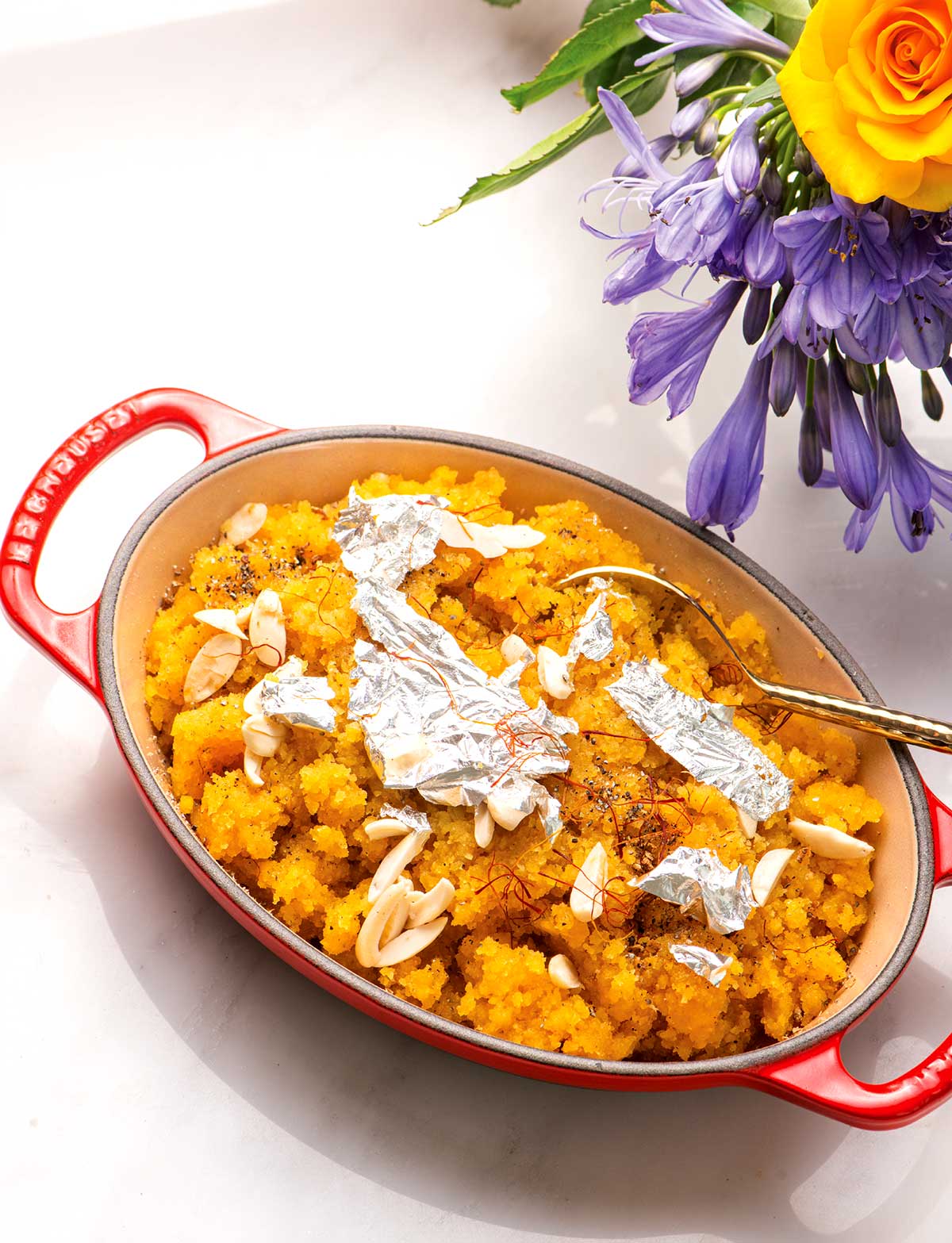Recipes: Mung Dal Halwa, Kashmiri Arhar Dal
3 minute readPublished: Tuesday, April 4, 2023 at 11:59 am

in your Inbox:
email
As Indians, very often when one mentions pulses/lentils or dal, we think of khichdi, mung dal or toor dal to go with a bowl of hot steamed rice and maybe dal pakodas.
Author and cook Pratibha Karan's The Book Of Dals features a whole variety of recipes which she has sourced from all across India, and even from beyond our borders from neighbouring countries, that highlight much more unusual and gourmet ways to prepare the humble lentil.
In our first part, we bring you two such recipes: Kashmiri Arhar Dal, which also happens to be Pratibha's favourite, and Mung Dal Halwa.
The former uses fresh shalgam or turnips, and 'the result is mind-blowing.' As for the halwa, it requires a lot of patience and sweat to nail the texture.
For those of who you haven't heard of the cookbook author, retired US ambassador A Peter Burleigh introduces her in the book's foreword.
'I should be embarrassed to confess that I met Pratibha Karan when, as a result of reading and using her extraordinary cookbook, A Princely Legacy: Hyderabadi Cuisine, I called her out of the blue and more or less invited myself to dinner,' he wrote.
'She, being incredibly courteous, replied with an invitation and made me feel that she had actually initiated the gesture, and not the opposite.
'On the night of the dinner, there was some confusion in my embassy's office and we thought I was invited for 7 pm, though that seemed remarkably early for an Indian dinner. Being an American, I arrived on time and found no one was expecting me.
'In fact, my shouting at the entryway to the house panicked the Karans' two daughters, Gauri and Nainika (designers Gauri&Nainika), who shrieked and fled to their rooms!
"Pratibha Karan appeared, obviously not ready to be hosting a dinner, but greeted me with aplomb anyway and ushered me into the cosy living room. In a few moments, Vijay Karan (the former CBI director) appeared and Pratibha excused herself to prepare for the dinner.
'As the lively conversation with Vijay gathered momentum, gradually, Gauri, Nainika and the Karans' son, Gaurav, appeared, joining in and enabling their father to excuse himself to also get ready to host the evening.
'Thus, began a 12-year relationship with the entire Karan family.'
Mung Dal Halwa
Serves: 8
Mung Dal Halwa is perfect for any festival, be it Holi, Diwali or Ganesh Chaturthi. Even though it is a festive indulgence in Bihar, it is cooked and relished in other parts of the country too.
Ingredients
200 gm green gram lentils or mung dal, split and skinned
1 cup sugar
Generous pinch kesar or saffron
cup khoya or milk solids
1 cup ghee
1 tbsp besan or chickpea flour
Seeds of 10-12 green elaichi or cardamom pods, powdered
15-20 almonds, slivered
3-4 chandi ke varq or silver leaves
4 cups water
Wash and soak the lentils in 3 cups of water for at least 6=8 hours.
Drain the water and in a blender, grind the lentils to a coarse paste.
Keep aside.
In a heavy-bottomed saucepan, add 1 cup water to the sugar and heat the mixture till the sugar dissolves.
Cook for 2 more minutes, take off heat and keep aside.
In another heavy-bottomed saucepan, heat the milk.
Add the saffron.
Mash the khoya and add to the milk.
Cook for 2 minutes more.
Take off heat and keep aside.
Heat the ghee in a heavy-bottomed saucepan.
Add the besan and stir for a minute.
Add the ground lentils and keep stirring to prevent it from sticking to the pan.
Saute over medium-low heat for about 20 minutes till it turns fragrant and golden brown.
Add the sugar syrup to the lentils and mix well.
Add the saffron milk with the khoya and mix well.
Cook over low heat for about 510 minutes, stirring occasionally.
Take off heat.
Sprinkle the cardamom powder on top and mix.
Transfer to a serving dish and decorate with almond slivers and chandi ke varq and serve warm.
Editor's Note: Those on a vegan diet might consider trying this recipe by substituting the milk with almond milk and ghee with cashew butter.
To make the recipe sugarfree, while making the sugar syrup use a sugar equivalent.
Kashmiri Arhar Dal with Shalgam
'The Mughal emperor Jahangir said of Kashmir, 'gar firdaus bar uae zamiast, hameeast, hameeast, hameeast' (if there is paradise on Earth, it is here, it is here, it is here!)'
'Kashmir is also known as the fruit bowl of the country, because many fruits are grown there -- apples, cherries, peaches, apricot, plums, strawberries, pomegranates and more.
Kashmiris use a number of dry vegetables in their cooking, like turnips, tomatoes, beans, peas and cabbage, which are dried for use during the harsh winter (when the temperature drops to -10C).'
Serves: 6-8